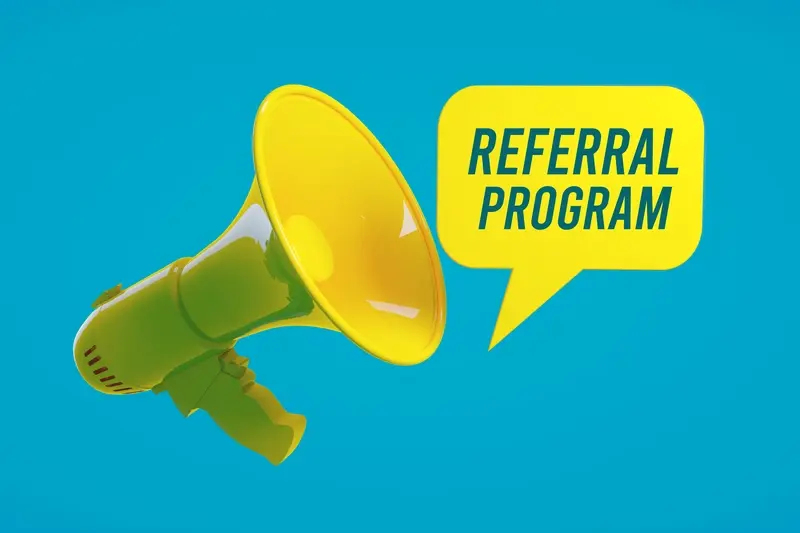How Do You Transform Your MVP into a Market-Leading App?
Did you know that 90% of startups fail? That's a staggering number, but here's the thing—most of those failures happen after the MVP stage. You've built something people want, you've got users downloading your app, maybe even some decent reviews. But then what? This is where the real challenge begins, and frankly, where most founders get stuck.
Building an MVP is one thing; transforming it into a market-leading app is entirely different. The rules change. The stakes get higher. Suddenly you're not just thinking about whether your app works—you're thinking about startup growth strategies, app scaling challenges, and whether you've actually achieved product-market fit or just got lucky with early adopters.
The gap between a successful MVP and a market-leading app is where most good ideas go to die
Over the years, I've watched brilliant apps with solid MVPs completely miss the mark when it came to scaling. They had the foundation right but couldn't figure out the next steps. That's exactly what this guide addresses. We'll walk through everything from measuring the right growth metrics to avoiding the common pitfalls that trip up even experienced teams. Whether you're a first-time founder or you've been through this process before, the journey from MVP to market leader requires a completely different playbook—and that's what we're here to build together.
Understanding Product-Market Fit
Product-market fit is one of those terms that gets thrown around a lot in the app world, but what does it actually mean? Simply put, it's when your app solves a real problem that enough people care about—and they're willing to use your solution. I've worked with countless clients over the years who thought they had this figured out, only to launch their MVP and discover crickets chirping where downloads should be.
The Tell-Tale Signs
You'll know you've hit product-market fit when users start doing the marketing for you. They recommend your app to friends without being asked; they complain when features don't work properly (which sounds bad but is actually brilliant—it means they care); they keep coming back even when your app isn't perfect yet.
On the flip side, if you're constantly having to convince people why they need your app, you probably haven't found that sweet spot yet. This isn't a failure—it's valuable feedback. Most successful apps pivot multiple times before finding their groove.
Finding Your Fit
The best way to discover product-market fit is to get your MVP in front of real users as quickly as possible. Listen to what they say, but more importantly, watch what they do. User behaviour tells the real story, not survey responses or focus groups.
Measuring What Matters
Here's the thing about growth metrics—most founders track everything but understand nothing. I've watched brilliant entrepreneurs get lost in vanity metrics whilst missing the signals that actually predict success. Downloads look impressive on paper, but they won't tell you if your app is genuinely solving problems or just collecting digital dust on home screens.
When it comes to startup growth strategies, you need to focus on metrics that drive real business decisions. Daily active users matter more than total downloads; retention rates tell a better story than install numbers. Revenue per user beats pretty much everything when you're trying to build a sustainable business.
Core Metrics That Drive Growth
The metrics you track should connect directly to your app's core value proposition. If you're a social app, engagement depth matters more than breadth. For productivity apps, frequency of use trumps session length. E-commerce apps live and die by conversion rates and average order values.
- Daily Active Users (DAU) and Monthly Active Users (MAU)
- User retention rates at day 1, 7, and 30
- Customer Acquisition Cost (CAC) versus Lifetime Value (LTV)
- Conversion rates for key user actions
- Revenue per user and monthly recurring revenue
Set up your analytics before you launch—not after. You can't measure growth without baseline data, and trying to implement tracking retrospectively is like trying to rebuild a plane whilst flying it.
Product-market fit shows up in your data before it shows up in your revenue. Watch for organic growth patterns, improving retention curves, and users who can't stop talking about your app. These signals appear weeks before the money follows.
Building Your User Base
Right, so you've got your MVP out there and people are starting to use it—brilliant! But here's where things get tricky. Getting those first hundred users is completely different from getting the next thousand. I've watched so many app founders make the mistake of thinking that if they build it, people will just magically appear. Spoiler alert: they won't.
Start with Your Super Fans
Your early users are gold dust. These people chose to download your app when it was rough around the edges, buggy, and probably missing half the features you wanted to include. They're not just users—they're believers. Talk to them, listen to what they say, and most importantly, ask them to tell their friends. Word of mouth is still the most powerful way to grow an app, especially in those early days.
Pick Your Channels Wisely
Social media, app store optimisation, content marketing, paid ads—there are dozens of ways to get new users. But here's the thing: you can't do them all well, especially when you're starting out. Pick two or three channels that make sense for your audience and focus on those. I've seen startups spread themselves so thin trying every marketing trick in the book that they end up doing nothing particularly well.
Scaling Your App Infrastructure
Right, so you've got users coming in, your app is getting noticed, and suddenly you're dealing with something most startup founders dream about—but weren't quite prepared for. Your servers are groaning under the load, your app is crashing during peak times, and your users are starting to complain. Welcome to the world of app scaling challenges!
I've seen this happen countless times with clients who've achieved that sweet spot of product-market fit. One day they're celebrating 1,000 downloads, the next they're panicking because 50,000 users are trying to use their app simultaneously and everything's falling apart. The thing is, scaling isn't just about throwing more servers at the problem—though that's part of it.
Planning for Growth Before You Need It
Smart startup growth strategies include thinking about infrastructure before you're forced to. This means choosing scalable hosting solutions from the start, designing your database to handle increased load, and monitoring your app's performance religiously. Tools like auto-scaling cloud services can be lifesavers when user numbers spike unexpectedly.
The best time to plan for scaling is when you don't think you need it yet
Your growth metrics should include server response times, crash rates, and user experience scores—not just download numbers. Because what's the point of acquiring new users if your app can't handle them properly?
Feature Development and User Feedback
Right, let's talk about something that trips up so many app developers—how to actually decide what features to build next. I've watched countless teams get this wrong, and honestly, it's painful to see. They'll spend months building something they think users want, only to launch it and hear... crickets. The problem? They never asked their users what they actually needed.
Your MVP gave you a starting point, but now you need to be smart about what comes next. Start by looking at your app analytics—where are users dropping off? What features do they use most? More importantly, what are they trying to do but can't? Set up simple feedback mechanisms like in-app surveys or a basic support system. You'd be amazed how much users will tell you if you just ask.
Building a Feedback Loop That Works
Here's what I recommend for gathering meaningful user feedback:
- Send short, targeted surveys after specific user actions
- Monitor app store reviews and respond to common complaints
- Set up user testing sessions for new features before launch
- Track feature usage with proper analytics tools
- Create a simple way for users to request features
The key is acting on what you learn. Don't build features just because one vocal user asked for them—look for patterns. When multiple users struggle with the same thing, that's your signal to prioritise a solution.
Monetisation Strategies
Right, let's talk about making money from your app—because building something brilliant is only half the battle. I've worked with countless startups who've cracked product-market fit but then struggled to turn their growing user base into actual revenue. The truth is, your monetisation strategy needs to align with your users' behaviour and your app's core value proposition.
There are several proven approaches you can take. Freemium models work well when you've got a clear feature divide between basic and premium users. Subscription models are brilliant for apps that provide ongoing value—think productivity tools or content platforms. In-app purchases suit gaming and lifestyle apps, whilst advertising revenue works best when you've got high engagement and decent user numbers.
Choosing Your Revenue Model
The key is understanding what your users are willing to pay for and when they're ready to pay. Some apps monetise from day one, others build audience first then introduce revenue streams gradually. Here's what tends to work for different app types:
- B2B productivity apps: subscription or tiered pricing
- Consumer entertainment: freemium with in-app purchases
- Content platforms: subscription or advertising revenue
- Utility apps: one-time purchase or freemium model
Start with one monetisation method and test it properly before adding others. Multiple revenue streams can confuse users and dilute your value proposition in the early stages of scaling.
Remember, your monetisation strategy should feel natural to users—not like you're constantly asking for money. The best revenue models solve user problems whilst generating sustainable income for your business growth.
Common Pitfalls in App Scaling
I've watched countless apps crash and burn during the scaling phase—and trust me, it's not pretty. The jump from MVP to market leader is where most apps fail, and it's rarely because of a lack of funding or technical skill. More often than not, it's because teams fall into predictable traps that could have been avoided entirely.
The biggest mistake I see is trying to scale everything at once. Teams get excited about their initial success and decide to add ten new features, expand to five new markets, and triple their team size simultaneously. This shotgun approach spreads resources too thin and dilutes focus from what made the app successful in the first place.
The Most Dangerous Scaling Mistakes
- Ignoring user feedback whilst chasing new features
- Scaling infrastructure too late—causing crashes during peak usage
- Adding complexity without understanding user needs
- Hiring too quickly without proper onboarding processes
- Neglecting app performance optimisation
- Forgetting to maintain code quality during rapid development
Another trap is the "feature factory" mentality. Teams start pushing out features weekly because they think more equals better. But users don't want more features—they want better solutions to their problems. I've seen apps go from beloved to bloated because developers lost sight of their core value proposition during the scaling rush.
Conclusion
Transforming your MVP into a market-leading app isn't rocket science, but it does require patience and smart decision-making. I've watched countless startups rush through this process only to stumble when they could have succeeded with a more measured approach. The key lies in understanding that startup growth strategies aren't one-size-fits-all—what works for one app might completely fail for another.
Product-market fit remains your North Star throughout this journey. Without it, all the fancy features and clever marketing in the world won't save your app. Focus on your growth metrics, listen to your users, and don't be afraid to pivot when the data tells you to. App scaling is about building sustainable systems that can handle growth without breaking your budget or your development team.
The startup app development world is full of pitfalls and expensive mistakes. But armed with the right knowledge about user feedback loops, infrastructure planning, and monetisation strategies, you're already ahead of most of your competition. Take your time, measure twice, cut once, and remember that every successful app started exactly where you are now—with an idea and the determination to make it work.
Share this
Subscribe To Our Learning Centre
You May Also Like
These Related Guides

How Do You Write Subject Lines That Get App Emails Opened?

How Do You Position Your App Across Multiple Geographic Markets?



